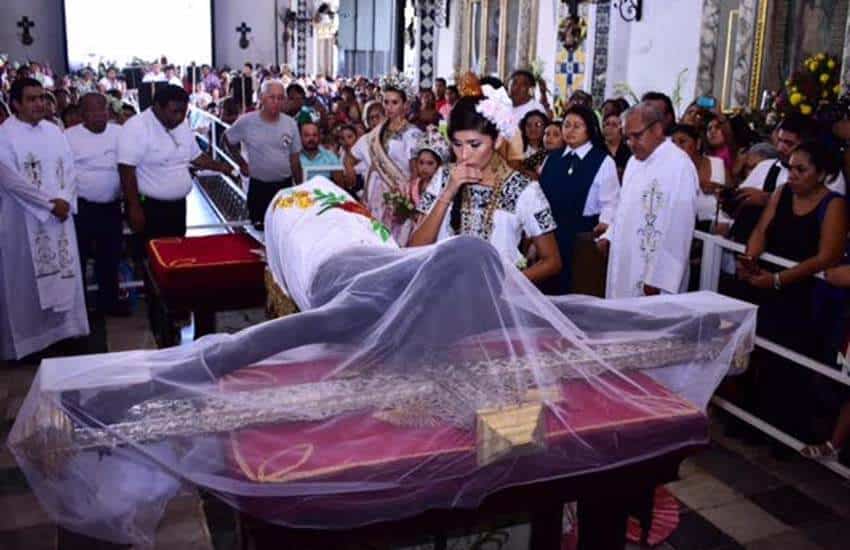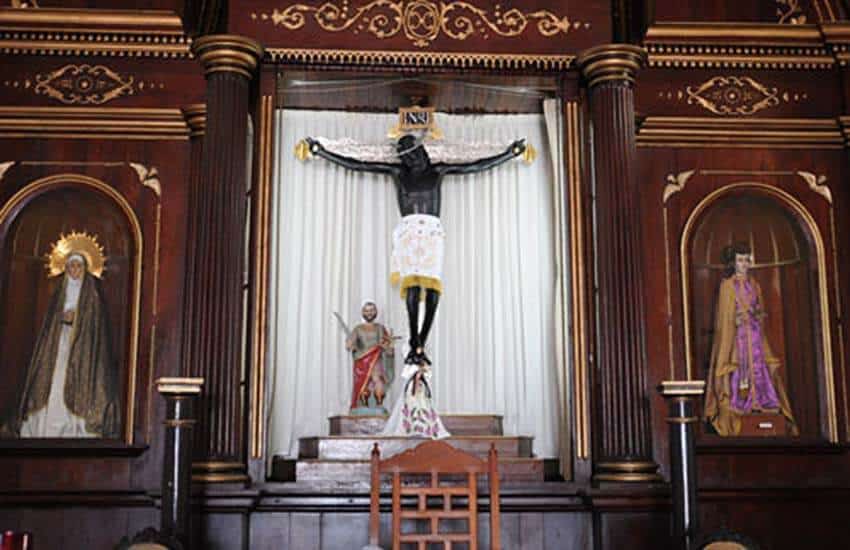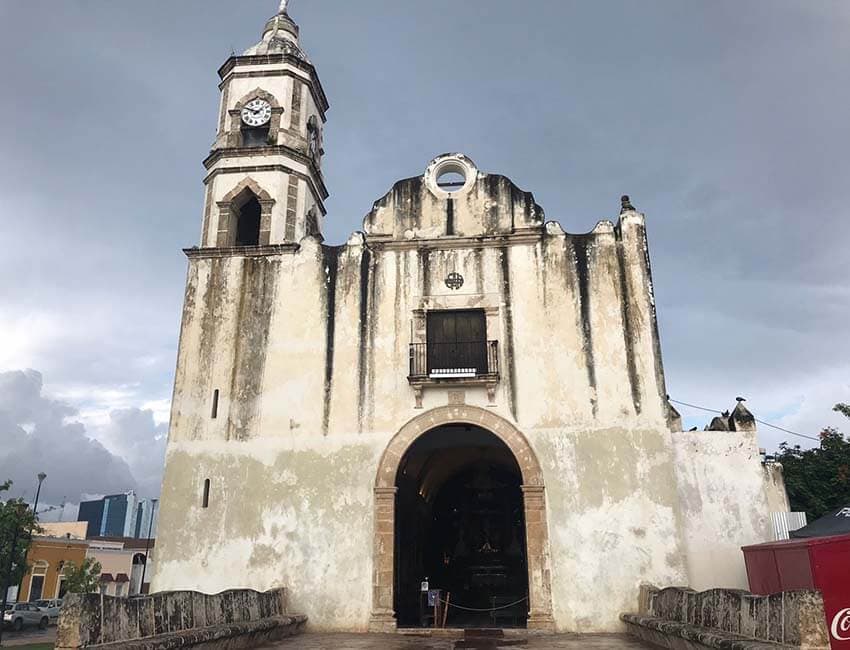The year is 1565. Juan Cano de Coca Gaitán and his fellow sailors, bound for Campeche on a ship that set sail mere hours ago from Veracruz, are losing control of the vessel in a hurricane.
During the storm, a dark-skinned figure appears on deck and helps the ship navigate through the winds and waves, ensuring the survival of its crew and precious cargo: a large crucifix bearing the image of the Cristo Negro (the Black Christ).
When the ship docks in Campeche, they have been at sea just 24 hours despite the storm — a journey that usually is a two-day sail. It is deemed a miracle.
Over four centuries since this arrival on the coast of Campeche, the Iglesia del Cristo Negro (Church of the Black Christ), also known as the Church of San Román, continues to venerate and celebrate this lauded icon. The church in which the crucifix has been housed since its arrival was built in 1563, though it was later enlarged to accommodate the growing congregation and to house the sizable saint. It sits a little way from Campeche’s historic center, in a neighborhood of the same name. Its imposing façade is otherwise unassuming; it lacks the vibrancy of the exteriors of the churches of Guadalupe and San Francisco elsewhere in the city or the imposing stature of the cathedral on Campeche’s main square.
Nonetheless, multitudes from across Mexico and beyond flock to Barrio de San Román every year to pay homage to the 1.8-meter-high ebony icon.

“The Black Christ is an icon of Campeche, no matter your religion — he is the patron saint of the fishermen and of the state, so his celebration is a tradition here,” says local resident Laura Haw Pacheco. “It’s the only festival for a patron saint celebrated in such a large way in Campeche.”
Every year on August 9, the Descent of the Cristo Negro heralds the beginning of the traditional Fiestas de San Román. A month later, the Black Christ is paraded through the streets and into the waters of the Bay of Campeche on boats to recreate its first arrival to the city.
The festival culminates in a two-week-long celebration between September 14 and September 28. Though restrictions due to COVID-19 have subdued the celebrations this year, the usual festival is a time for the community of San Román to come together through processions, agricultural exhibitions and artisanal fairs. Arguably, these celebrations supplant even Independence Day in importance to residents.
According to popular memory, in the years since the Black Christ arrived in Campeche, a number of other miraculous events have been associated with the Church of San Román, adding to the sculpture’s mystique.
As one tale tells it, a band of looting pirates attempting to steal the venerated crucifix were zapped by an electrical charge emanating from the cross and sent hurrying from the building in fear.
Of course, it is near-miraculous in itself that the statue has withstood the relentless march of time to survive, in near perfect condition, for almost half a millennium.

As such, says Neto Cauich, another local who has lived his full 67 years no more than half a block from the Christ, “The Cristo Negro is an integral part of the cultural history of Campeche.”
“Obviously, he is a religious icon,” Cauich continues, “which is immensely important in a city that has such strong affiliation with its Catholic past. But the Festival of San Román also feeds into the history of the campechano people as an emblematic example of the community that has always existed here and continues to exist today.”
The Cristo Negro of San Román is far from the only Black Christ in Latin America; veneration of such statues is widespread. Such figures emulate the development of other dark-skinned idols in Latin America, such as the Black Madonna, whose ritual devotions blend Catholicism, Mesoamerican tradition and popular lore.
Moreover, there is a global folk history of dark-skinned figures coming to hold a variety of connotations, although where these are racial appropriations — such as the Dutch Zwarte Piet, also known as the Black Santa — they have become polemical figures.
What marks out the Black Christ of San Román, however, is that although the symbology was imposed by the Spanish, the local population has taken the symbol as its own.
“We may not be Black as such,” says Haw Pacheco, “but historically, the perception of our skin was that we were darker, poorer, less civilized. Of course, this is far from the truth, but we take this symbol as a badge of honor. This is our land, our history. Our skin is a mix of all our races and all our histories. That is the truth.

“And this Christ? Well, this Christ is our Christ.”
Shannon Collins is an environment correspondent at Ninth Wave Global, an environmental organization and think tank. She writes from Campeche.
